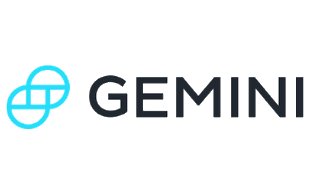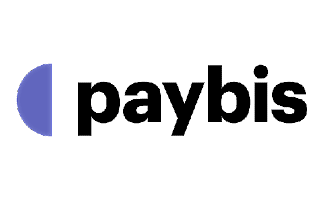Gemini Cryptocurrency Exchange

- Trade DOGE and 80 other cryptos.
- Platform designed for traders of all experience levels
- Get $25 in Bitcoin when you trade $100 with code Finder25
Gemini Cryptocurrency Exchange

As the original memecoin, Dogecoin (DOGE) achieved notoriety in 2021 when it gained mainstream attention and reached an all-time-high price of $0.731578 in May 2021.
While this has helped make DOGE the #8 crypto by market cap, Dogecoin is still a highly volatile asset capable of major price swings in a single day.
Today, DOGE is trading for $0.166751, which is slightly up from yesterday's trading price of $0.1664012246. Dogecoin has an increased by 4% over the past year.
So before you buy Dogecoin, make sure you understand these unique risks as well as its legal, regulatory and tax status here in the US.
If you're ready to get started, read on for step-by-step instructions and a list of platforms you can use to buy Dogecoin in the US.
To buy DOGE, all you'll need is a smartphone or computer, an internet connection, photo identification and a way to pay.
Promoted

Promoted

Promoted

Promoted

Disclaimer: This page is not financial advice or an endorsement of digital assets, providers or services. Digital assets are volatile and risky, and past performance is no guarantee of future results. Potential regulations or policies can affect their availability and services provided. Talk with a financial professional before making a decision. Finder or the author may own cryptocurrency discussed on this page.
If this is your first time buying cryptocurrency look for a platform that accepts US dollars, like Gemini or Public.
Don't worry too much about extra features or coins for now – you can always sign up with another exchange later.
Use the table to choose a platform that meets your needs and click the Go to site button to get started.
Are you visiting from outside the US?
We currently don't have that product, but here are others to consider:
How we picked theseSoftware engineers Billy Markus and Jackson Palmer created Dogecoin (DOGE) as a joke to inject some comedy and entertainment into the cryptocurrency space.
It is a fork of the Bitcoin and Litecoin codebases with some modifications, including its total supply and block time. Similar to BTC and LTC, DOGE is a payment coin that relies on a proof-of-work consensus that requires miners to run hardware to generate new blocks and support on-chain transactions.
Since its inception in 2013, Dogecoin has gained what could be described as a "cult following". It is one of the most recognised and popular cryptocurrencies and has paved the way for dozens of meme coins, including Shiba Inu and Baby Doge.
Read our beginner's guide to how Dogecoin worksTo create an account with your chosen crypto platform, you only need an email address or mobile number. This will usually allow you to deposit cryptocurrency, but not USD.
If you want to buy Dogecoin with US dollars, you'll need to pass a Know Your Customer (KYC) check.
This is a standard security procedure for most exchanges in the US and requires you to upload some photo ID, and in some cases a selfie with today's date.
KYC is usually approved instantly, but in rare cases, you may have to wait a few hours or days.
Once you've set up your account, you'll need to deposit funds to buy Dogecoin with. We've listed some popular ways to buy DOGE and what you should know about each payment method.
Most exchanges let you buy as little as $5 worth of DOGE, if not less. Just type in how much you want to spend in USD and let the exchange work out the rest.
Some platforms only offer 1 way to buy Dogecoin, while others provide several choices. The 2 most common ways to buy DOGE are on the spot market or with an "instant buy" feature.
If it's your first time buying Dogecoin, this will be the fastest method – but also the least cost-effective.
The instant buy section is usually located under a "Buy now" heading on the platform you've chosen.
It should feature a simple interface that lets you enter the amount of Dogecoin you want to buy or US dollars you want to spend.
This is usually the only option available for credit or debit card purchases, but you may also be able to make an instant buy if you've pre-funded your account with a bank transfer.
Be prepared to pay a markup on DOGE's market rate in exchange for the convenience.
If you see colorful charts with a range of prices, you're probably in the spot market.
The spot market is where buyers and sellers come together to place bids for DOGE on the open market. It's usually the cheapest way to buy Dogecoin because it lets traders set their own prices.
You'll find the spot market under a "Trade" or "Spot" heading on the site or app menu of the platform you've chosen to use.
There are several different order types that you can make on the spot market.
There are dozens of different trading platforms to choose from when buying Dogecoin in the US, so to help you find your best option, keep these factors in mind:
Crypto exchanges founded and based in the US are required to register with the Financial Crimes Enforcement Network (FinCEN), a division of the US Department of the Treasury. This bureau safeguards the US financial system by working to prevent money laundering, terrorist-financing activity and other financial crimes.
FinCEN-registered exchanges contribute to a more secure financial system in the US and provide you with better consumer protections compared to exchanges based in other countries.
Other reasons for using a FinCEN-registered exchange may include the following:
You shouldn't invest in any asset, including DOGE, without doing plenty of research first. Before you buy Dogecoin, make sure you understand and weigh up these risks:
Dogecoin may see a modest increase in its value in 2022, with Finder's panel of fintech specialists giving an average end of 2022 prediction of $0.08. Going forward, the panel projects DOGE to be worth around $0.19 in 2025 before rising to $0.64 by 2030.
All the content may be republished with a link to this page
Press enquiries
Compare today's price of Dogecoin ($0.166751 USD) against its all-time high (ATH) price of $0.731578 USD on May 08, 2021. The closer the bar is to 100%, the closer DOGE is to reaching its ATH again.
If you hold Dogecoin as an investment, you'll be taxed on any capital gains you make when you sell it — which includes spending it on goods and/or services. In the US, tax obligations also apply to mining, professional Dogecoin trading and in a range of other scenarios, so make sure you're fully aware of what you need to report to the IRS.
Use our round-up of the best crypto tax software to make tax reporting easier.
If you want to buy Dogecoin, start by comparing a range of crypto brokers and exchanges available in the US. Look at their features, fees, security and overall reputation to decide which platform is right for you. Use an exchange registered with FinCEN for added peace of mind.
Remember that owning and using Dogecoin is not without its risks. Carefully consider investing in DOGE as part of a wider strategy, and talk to a financial advisor if you have any questions.
Once you've bought some DOGE, think about your short and long-term goals. This will help you decide whether to keep it on an exchange or move it to your own wallet.
Unfortunately, there's no easy way of knowing for certain whether any asset is a good investment. A good place to start your research is by considering DOGE's utility.
Dogecoin founder Billy Markus has openly stated that he created the crypto in about 3 hours. He cloned Bitcoin's open-source code and added some minor tweaks to the block time.
"It was a find-and-replace job. Ctrl+F Bitcoin, replace with Dogecoin."
Although DOGE is now its own distinct, multi-billion-dollar crypto, it offers no unique utility in the digital currency and payments space. Before investing in Dogecoin, make sure you explore DOGE price prediction data and closely evaluate the risks.
Lots of crypto trading platforms can help you buy Dogecoin with USD, including Gemini and Public. Once you've created and verified your account, you'll be able to purchase some DOGE.
Compare more trading platforms that let you buy DOGE with fiat currency in our table.
There are a handful of ways to earn small amounts of free DOGE, including playing online games, using a crypto faucet or paying for goods with a crypto rewards credit card.
Read our guide on how to earn free crypto for other potential ways to earn some free DOGE.
If you don't already own crypto, the easiest way to buy DOGE is with US dollars.
To get started, choose a crypto trading platform like Gemini that allows you to deposit USD.
Alternatively, you may need to convert your USD into BTC or USDT first, which you can then trade for DOGE.
Whether products shown are available to you is subject to individual provider sole approval and discretion in accordance with the eligibility criteria and T&Cs on the provider website.
We currently don't have that product, but here are others to consider:
How we picked theseDisclaimer: Cryptocurrencies, including Dogecoin, are speculative, complex and involve significant risks – they are highly volatile and sensitive to secondary activity. Performance is unpredictable and past performance of DOGE is no guarantee of future performance. Consider your own circumstances, and obtain your own advice, before relying on this information. You should also verify the nature of any product or service (including its legal status and relevant regulatory requirements) and consult the relevant Regulators' websites before making any decision. Finder, or the author, may have holdings in the Dogecoin or any other cryptocurrency discussed.
This guide provides step-by-step instructions on how to buy POL, lists some exchanges where you can get it and provides daily price data on (POL).
This guide provides step-by-step instructions on how to buy Pepe, lists some exchanges where you can get it and provides daily price data on (PEPE).
This guide provides step-by-step instructions on how to buy TRON, lists some exchanges where you can get it and provides daily price data on (TRX).
This guide provides step-by-step instructions on how to buy IOTA, lists some exchanges where you can get it and provides daily price data on (MIOTA).
This guide provides step-by-step instructions on how to buy Stellar, lists some exchanges where you can get it and provides daily price data on (XLM).
This guide provides step-by-step instructions on how to buy Bitcoin Cash, lists some exchanges where you can get it and provides daily price data on (BCH).
This guide provides step-by-step instructions on how to buy Bitcoin Gold, lists some exchanges where you can get it and provides daily price data on (BTG).
Learn how to sell Dogecoin in 3 simple steps.
Learn how to buy Cardano in the US with our simple step-by-step guide and tips on what to know before you get started.
Learn how to buy Litecoin in the US with our simple step-by-step guide and tips on what to know before you get started.